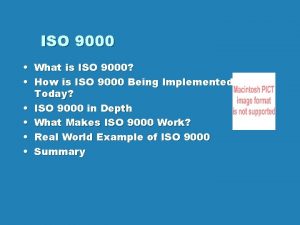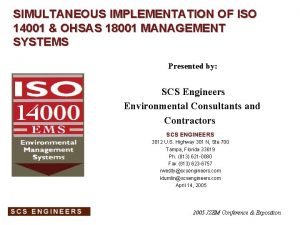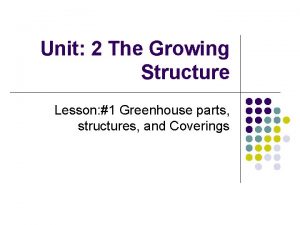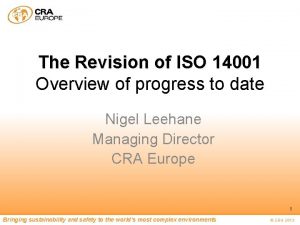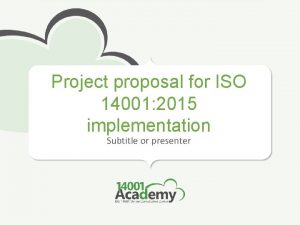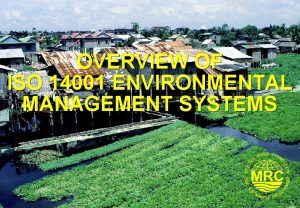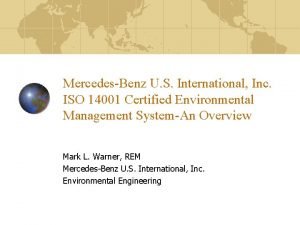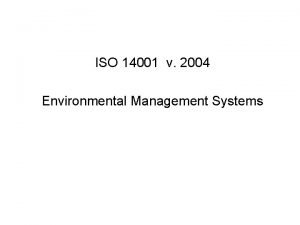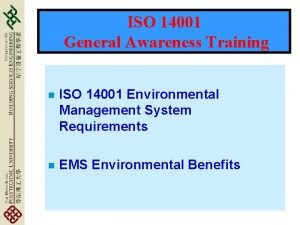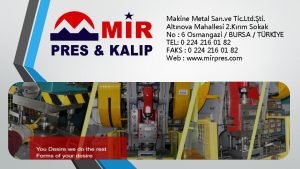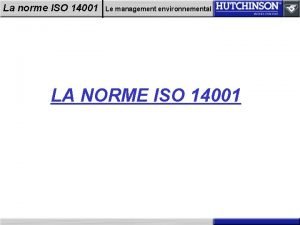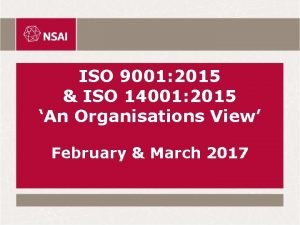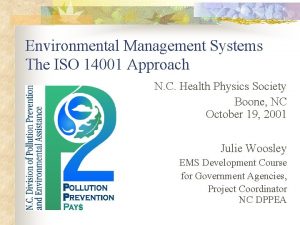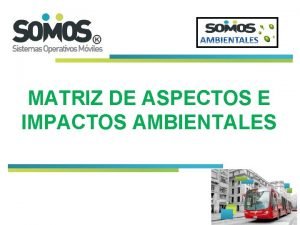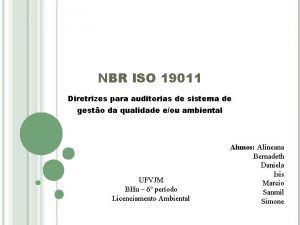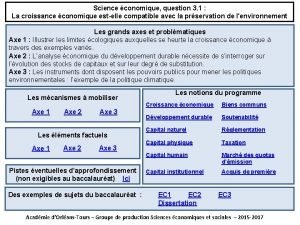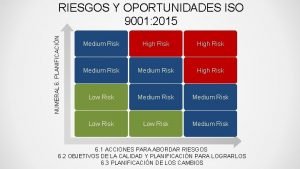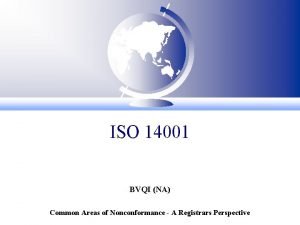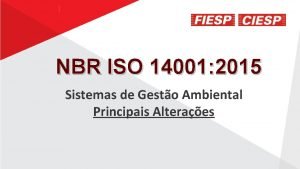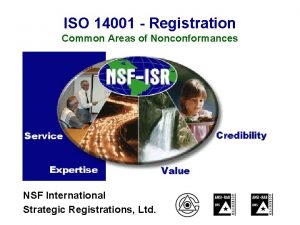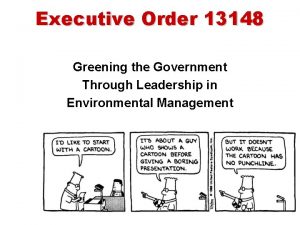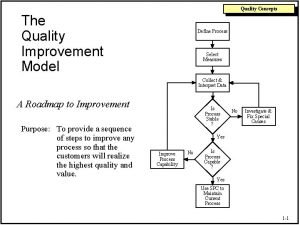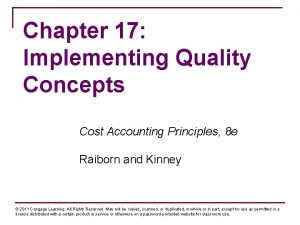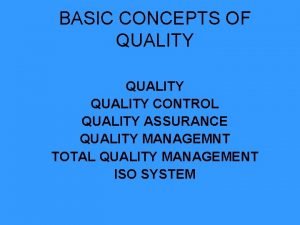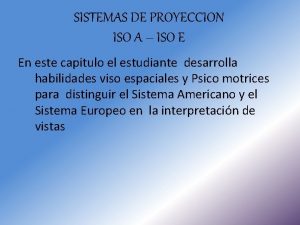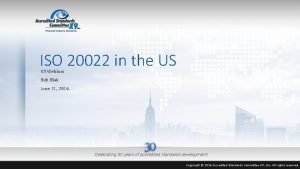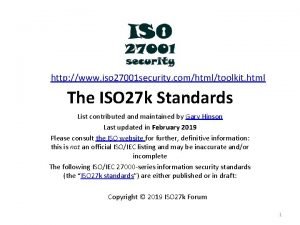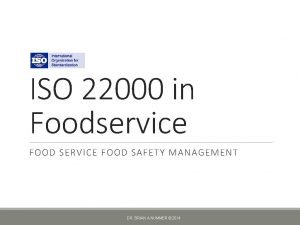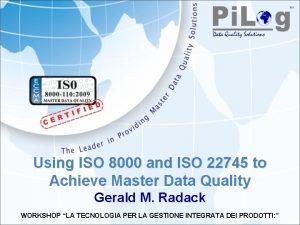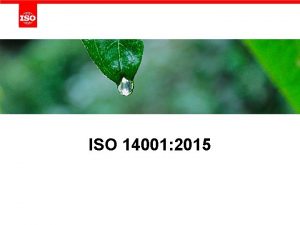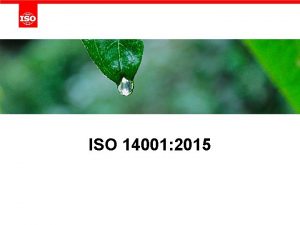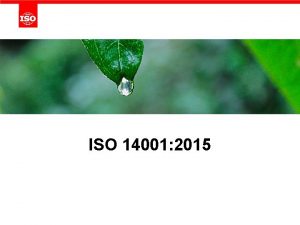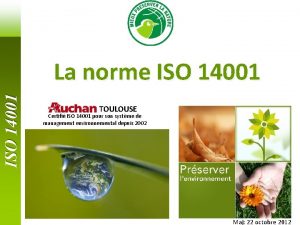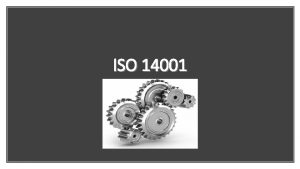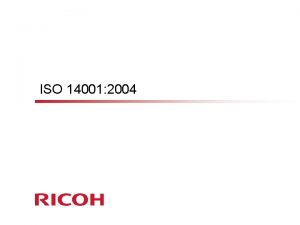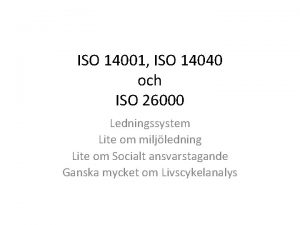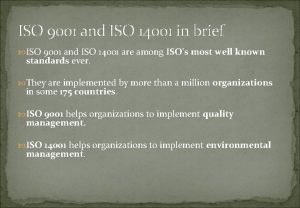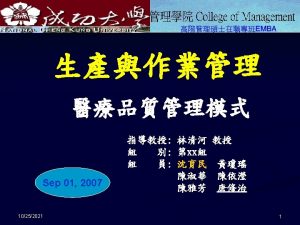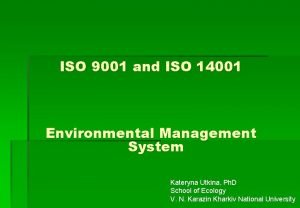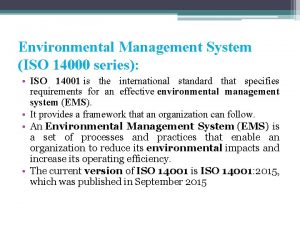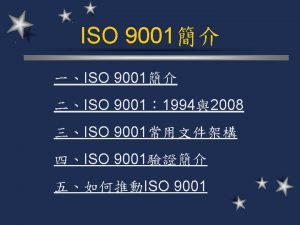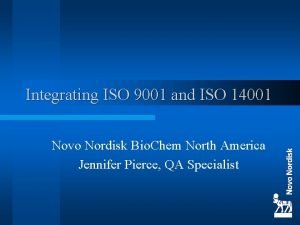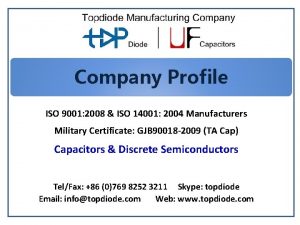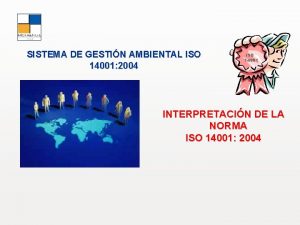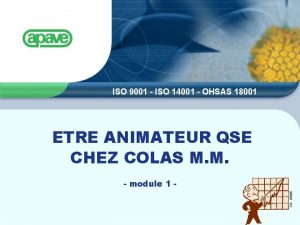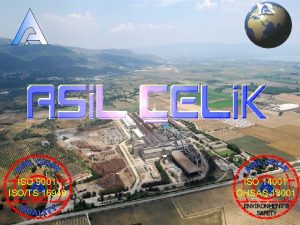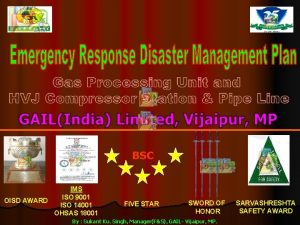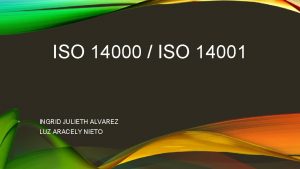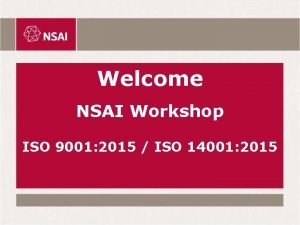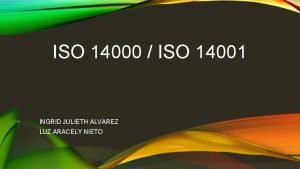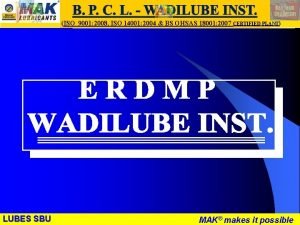Unit5 Quality System Lesson1 Concepts of ISO 14001






























- Slides: 30

Unit-5 Quality System

Lesson-1.

Concepts of ISO 14001: � 1 Environmental policy Planning Management Review Continual improvement Checking and corrective action Implementation and operation

Environmental Policy: �Management commitment to continual improvement. �Prevention of pollution. �Compliance with environment laws and regulation cooperation with public authorities. �Creating framework for setting objectives. �Communication requirements with shareholder �Education and training for environment.

Planning: q Planning stage contains four elements such as, 1. Environmental aspects(product and service should be identified environmental impact) 2. Legal and other requirements(Organization should identify and access) 3. Objectives and targets(Organization should establish and maintain for relevant function and level) 4. Environmental management program(Organization should establish and maintain for achieving the objectives and target)

Implementation and operation: q. This stage contain seven elements such as, 1. Structure and responsibility 2. Training, Awareness and competency 3. Communication 4. EMS documentation 5. Document control 6. Operational control 7. Emergency preparedness and response

Checking and Corrective Action: q This stage contain four elements such as, 1. Monitoring and measuring 2. Non conformance and corrective and preventive action 3. Records 4. EMS audit

Management Review: q Management should review and revise the system in order to ensure the continuing suitability, adequancy and effectiveness of the EMS q. The management must evaluate the feedback data and make improvement the system.

Lesson-2 Need For ISO 9000 And other Quality System

Need for ISO 9000: q. Every Organisation is concerned with the quality of product or service. q. To ensure the quality is necessary to make quality assurance system q. An organisation to market its product and service in the competitive business environment

Reasons for Implementing a Quality system to conform ISO Standard Ø Improved employee involvement Ø Improved Housekeeping Ø Improved decision making based on facts and data Ø Improved customer satisfaction Ø Improved Safe Working Ø Reduced customer complaints Ø Reduced Inspection efforts Ø Reduced quality cost

Objectives of ISO 9000 Quality System: �Five objectives of ISO 9000 they are, 1. To achieve maintain and seek to continuously improve product/service in quality relationship 2. To improve the quality of operation to continually meet the customer and stakeholders stated and implied needs. 3. To provide confidence to internal management and other employees. 4. To provide confidence to customer and other stakeholders. 5. To provide confidence that quality system requirements are fullfilled.

Benefits of ISO 9000 certification: Ø It provides good platform for continuous quality improvement. Ø It provide status symbol for the organization act as powerful marketing tool Ø It increase the potential market share Ø It improve employees morale and ensures their total involvement Ø It establishes a firm base for management of growth, change and continuing improvement Ø It ensures customer satisfaction

. Ø It generates customer confidence through world class products/services Ø It ensures confidence with all stakeholders in the organization including supplier, investors, shareholders etc Ø It improve the perception of product quality

What is ISO? q International Organization for Standardization is an association of national standards bodies more than 150 countries q. ISO is a specialized agency for standardization q. The result of ISO technical work are published as international standards

What is accreditation? q In simple terms accreditation is like certification of the certification body q. Accreditation should not be used as an interchangeable alternative for certification or registration

Differnce between ISO 9000 and TQM: q ISO 9000 is not TQM, but is a subcomponent of TQM and a good start of TQM journey q. ISO 9000 is a minimum required quantity standard, TQM by contrast is much more comprehensive q. In other words, ISO 9000 is just a milestone, where TQM is never ending journey q. ISO focuses on technical system and procedure, TQM focuses on philosophy, concept, tools and techniques

Lesson-3 ISO 9001 -2008 Quality System

Quality Management Principles: q ISO 9001 requirement almost same for both 2000 and 2008 version q ISO standards are based on eight quality management principles 1. 2. 3. 4. 5. 6. 7. 8. Principle 1: Customer Focus Principle 2: Leadership Principle 3: Involvement of people Principle 4: Process Approach Principle 5: System Approach to Management Principle 6: Continual Improvement Principle 7: Factual Approach to Decision Making Principle 8: Mutually Beneficial Supplier Relationship

1. ISO 9001: 2008 Elements q. ISO 9001: 2008 Standard has eight major parts 1. Scope General Clauses 2. Normative Reference 3. Terms and Definition 4. Quality Management System 5. Management Responsibility 6. Resource Management 7. Product Realization 8. Measuring, Analysis and Improvement Technical Clauses


ISO 9001: 2008 Process Model

2. Documentation Of Quality System: q. It understood that the proper documentation is the prerequisite for implementing quality system q. The document serves as a reference for the management, staff and other agencies.

Advantage: 1. 2. 3. 4. 5. 6. 7. Serves as a reference Bring about clarity of objectives and targets Provides Standardisation in work procedures Brings about consistency in operation Develops confidence amongst employees Generates customer confidence Provides a basis for continuous improvements etc

Documents to be prepared:

3. Quality Auditing: �Definition: A quality System audit is defined as a systematic and independent examination to determine whether quality activities and related results with planned arrangements whether these arrangements are implemented effectively and these are suitable to achieve objectives

Features of quality audits: �Some salient features about quality audits are: q The quality audit typically applies to quality system or elements such as processes, product or services. Such audits are often called quality system audits, process quality audits, product quality audits and services quality audits q Quality audits are carried by staff who are not directly responsible in the areas being audited q Quality audit is an information gathering activity. q Quality audits may be conducted for internal and external purposes

Types of Audits: �The general classification of audits is given below: 1. First party audit 2. Second party audit 3. Third party audit

Objectives of Quality Audits: 1. To determine the conformity or non-conformity of the quality system 2. To determine the effectiveness of the implemented quality system 3. To meet the regulatory requirements 4. To permit the listing of the audited organisation quality system 5. To evaluate an organisation own quality system

Stages of an audit: q The Four stages of the auditing are, 1. Audit Planning q q Audit Schedules Audit personnel Notification to the auditee Preparation of checklist 2. Audit Performance q q q Opening/Entry Meetings Audit Process Audit Deficiencies 3. Audit Reporting 4. Audit Follow-Up
 Norma iso 9000 2000
Norma iso 9000 2000 Iso 9001 iso 14001 ohsas 18001 comparison
Iso 9001 iso 14001 ohsas 18001 comparison Unit 2 lesson1
Unit 2 lesson1 Iso 14001 revision
Iso 14001 revision Iso 14001 implementation project plan
Iso 14001 implementation project plan Iso 14001 summary
Iso 14001 summary Mercedes benz iso 14001
Mercedes benz iso 14001 Quiz iso 14001
Quiz iso 14001 17 elements of iso 14001
17 elements of iso 14001 Altnova
Altnova Manuel environnement iso 14001 version 2015
Manuel environnement iso 14001 version 2015 Needs and expectations of interested parties example xls
Needs and expectations of interested parties example xls Iso 14001 environmental policy statement examples
Iso 14001 environmental policy statement examples Foda ambiental
Foda ambiental Nbr iso 19011
Nbr iso 19011 Exemple politique environnementale iso 14001 version 2015
Exemple politique environnementale iso 14001 version 2015 Oportunidades iso 9001
Oportunidades iso 9001 Danone iso 14001
Danone iso 14001 Bvqi
Bvqi Nbr iso 14001 2015
Nbr iso 14001 2015 عید 14001
عید 14001 Eo 13148
Eo 13148 Concept of quality assurance
Concept of quality assurance Quality concepts
Quality concepts Quality principles and concepts
Quality principles and concepts Basic concepts of quality management
Basic concepts of quality management Norma iso e
Norma iso e Iso 8583 to iso 20022 mapping
Iso 8583 to iso 20022 mapping Iso 27550
Iso 27550 Iso 9000 iso 22000
Iso 9000 iso 22000 Iso 22745
Iso 22745
